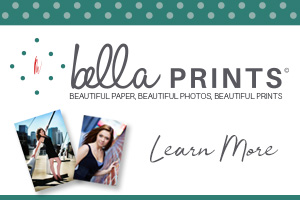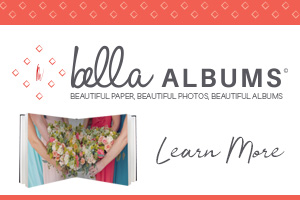Intro by Skip Cohen
The most challenging form of communication is the written word. In fact, it’s one of the key reasons we all see so many battles in many of the Facebook forums. Disagreements come up, and people often turn into trolls, not because they’re want to be hurtful, but because they ignore the tone of what they’re writing.
When communicating via the printed word, there are no facial expressions or intonations to impact your message. All you’ve got are the words you’ve written!
In this post from the archives of Sprout Studio/Sprouting Photographer, Bryan Caporicci delivers a stellar message to help you pay more attention to what you’re writing. And today, because so often you’re writing versus meeting a client in person, face to face, your printed words have more power than ever.
Excellent communication in your business has NEVER been more important than it is today!
By Bryan Caporicci
You are a copywriter.
Not a copyrighter. Well, you are. But not in the context of this conversation. Copywriting means communicating something and moving a reader to action. Copywriting is literally everything you write.
Think about it.
You write an email to communicate something. Often, you’re trying to guide the person on the other side of the email along – maybe to book you, to select images, to give you details for an upcoming shoot, or just to set up a meeting. You usually have a goal and an outcome.
You write a blog post, posts on social media, content for your website. It’s all copywriting. You’re trying to communicate effectively and move the reader towards action.
Say the right thing to the right people
You must know who you’re talking to. Call it whatever you want – a customer profile, an avatar, an ideal client – you just need to know who’s on the other side of what you’re writing.
Why?
Well because it allows you to write to them! And when you write to one person, they read it as if it’s written for them. And that’s what we all want, right – to feel like we’re being spoken to, directly, not talked at, in a crowd?
People want to be spoken to, 1-on-1, not talked at, in a crowd.
Knowing who you’re talking to means that you can also speak in nuances. If you know who’s reading what you’re writing, you’ll know how you can speak – what kind of tone, mood, personality, format, and so on. Having an intimate understanding of the person on the other side of the message helps you be more relevant, relatable and personable.
Oh, and bonus point – always, always, always talk in terms of the other person. Talk about WIIFM (what’s in it for me?) to the other person. Make sure that you frame everything in terms of them!
Be human about it
People do business with people. Plain and simple. In your writing, you may feel pulled to immediately put on the “business hat” and be overly formal about it.
Don’t.
Be human. Be personable. People do business with people.
That doesn’t give you permission to get sloppy, have all kinds of typos and be grammatically incorrect. No. Write correctly, but don’t feel the need to put on a suit and tie as soon as you start hammering away at the keyboard.
Tell stories
As human beings, we’ve always communicated with stories.
Stories connect us. They make an impact. They give us something to share. They’re easy-to-recall, and they help us remember facts. Incorporate stories into your copy as much as you can.
You’re a photographer. You should have lots of stories to tell! Bonus points if you can craft a great story with a beginning, middle and end (sprinkle a bit of conflict in there) and then wrap it up with an image. It gives the image some context and drives greater meaning and impact.
Be kind to the eyes
Imagine if everything was written as long, ongoing sentences that didn’t have proper breaks and pauses so that as we read them, we didn’t give not only our brains and minds a break but also our eyes a break, and it made us feel heavy and overwhelmed as we read through it because it just seemed to go on and on and on and on. That would feel like a tidal wave hitting us, smashing us in the face, and even if we can convince ourselves to get into it, dive deep, read, and keep going, our eyes (and our brains) will subconsciously numb out and we won’t actually digest what we read and so when we’re all done reading it, we’ll probably forget it and it won’t make an impact. It’ll leave us tired and sleepy and slothy and we’ll not want to continue in the dialog with the person who wrote it and just look for the closest door to leave out of.
Did you read that?
Did you enjoy it?
Did you notice that I used the worth “slothy” in it?
That’s the point! You need to format your copy. You need to be kind, visually. Chunk up long sentences. Use paragraphs. Break the rules you learned in high school; it’s ok to have one-or-two-word sentences. I promise.
(See what I did there?)
Get help
I’m not telling you to seek professional help.
But there are some fantastic tools that can help you write better copy. Two that I recommend are Grammarly and Hemmingway Editor. You type in your copy, and they’ll tell you, immediately, what you need to improve.
Things like …
This sentence is too long. This one is complex. This part uses a passive voice. This is an overused word. So-on and so-forth. I love it and use it for everything I write – you should too!
The world of copywriting can get complex. For copy-geeks like me, you can get really into the nitty-gritty. We talk about conversation rate optimization, using an active voice, speaking in power words, the sandwich effect, social proof, and so on.
Don’t stress about it, though. It doesn’t have to be complicated.
Copywriting (anything you write) is simple. Just …
- Say the right thing to the right people.
- Be human about it.
- Tell stories.
- Be kind to the eyes.
- Use tools to get help.

















